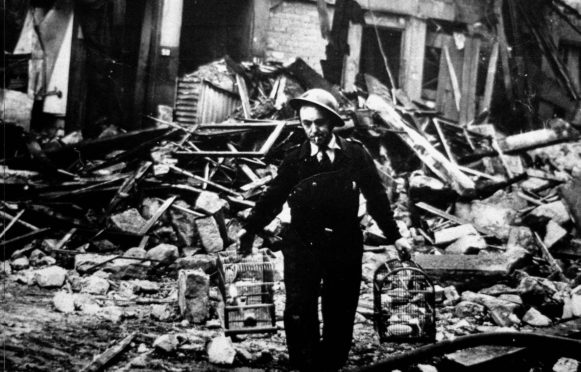
Whatever it becomes, the coronavirus crisis has already delivered a sobering lesson in just how fragile our world can be and just how quickly the ground can move beneath our feet.
It is already being compared to pivotal, generational-shaping events in national and international history, the world wars or Spanish Flu, but, more important than comparisons, is the need to learn from these seismic events in our past.
We might never know how many of us will contract coronavirus. Its spread is already deemed a pandemic, as was the Spanish Flu of 1918 but there are significant differences. Spanish Flu impacted one third of the planet’s population. There were an estimated 50 million deaths, the numbers who suffered were about 500 million.
In an effort to halt the spread of the coronavirus – people with symptoms are now advised to consult NHS websites and not visit their GPs, so we might never know the true number of cases.
Canadian academic Mark Osborne Humphries considered how Canadian health services moved from reactive disease management to more proactive disease prevention following Spanish Flu outbreaks.
War is often the locomotive of history but in this case it might be disease that is the bringer of significant changes.
One of the things that has clearly changed is communication. We now have mass communication; people have easier access to information but they also can be the providers of information. We did not have that in 1918.
Social media can get more information to more people, faster than ever before but the catch is that information can be inaccurate and create unnecessary fear and hysteria faster than ever before.
One of the clear differentials to previous adversity – like the world wars – is a common enemy. There is no common enemy with the coronavirus and we need to be very careful because in previous periods where disease has ripped through communities, there was a risk of blame. We have seen it in recent history with HIV and Aids, and centuries ago with the plague and other epidemics.
They were times of misinformation, stigmatisation, and stereotypes and the finger of blame pointed at certain groups that have nothing to do with the issues. So, crises like these can bring out the worst in people.
Societal fragmentation in terms of people stockpiling and looting is no doubt a risk. It wasn’t that long ago – in 2004 – that the security service MI5 said we are only four meals away from anarchy – when Britain could be quickly reduced to large scale disorder, like looting and rioting, in the event of a catastrophe that stops the supply of food. The balance of society is fragile and it wouldn’t take much for it to be tipped over.
We need to be cautious and to maintain a cooperative collective during this pandemic. It has been achieved before, and can be achieved again. We are stronger together.
Adversity like this can bring out the best in people. The cholera outbreaks of the 1850s saw heroic medical figures coming through like Dr John Snow, who was hailed for finding the link between water and the disease. Florence Nightingale, who organised medical services in the Crimean War of 1853 to 1856, came out of that as a national hero. Recently the University of Aberdeen hailed Professor Janet Derbyshire for her work in improving knowledge around TB and HIV. And it is easy to imagine similar leaders stepping up and into the history books during this crisis.
It is also too soon to say whether we will see the public adopting the Blitz Spirit of the Second World War but one would hope that this is how things unfold, that people will connect. Our NHS is a tremendous national asset and brings out the best of the collectivism in British society. In the Blitz, though, you had state interventions that stopped stockpiling, profiteering and looting.
Whilst in one regard coronavirus could see us retracting into isolationism, and hiding behind national borders, the solution to it will come from multiple people with multiple ideas across different borders. We need to make sure this crisis does not help build barricades and borders.
Today’s historians look back on the First World War and see mentions of Spanish Flu in letters and diaries. School logbooks from across Scotland contain discussions about the Spanish Flu, of schools being closed and of the impact on the local community. We have lost some of that because today’s records are electronic, recording things like student attendance and exam results. People don’t keep diaries today.
Historians of the future will be trawling through social media posts to try to establish society’s reactions from different geographic locations to the coronavirus. Will it make its mark in history? Only time will tell.
We may be living through one of the most significant events of the century, or it might pale into insignificance when historians look back.
One thing is for sure, doctors and politicians should be looking to the past to make sure they do not repeat the mistakes of history.
Neil McLennan is a social historian and leadership expert at the University of Aberdeen

Enjoy the convenience of having The Sunday Post delivered as a digital ePaper straight to your smartphone, tablet or computer.
Subscribe for only £5.49 a month and enjoy all the benefits of the printed paper as a digital replica.
Subscribe